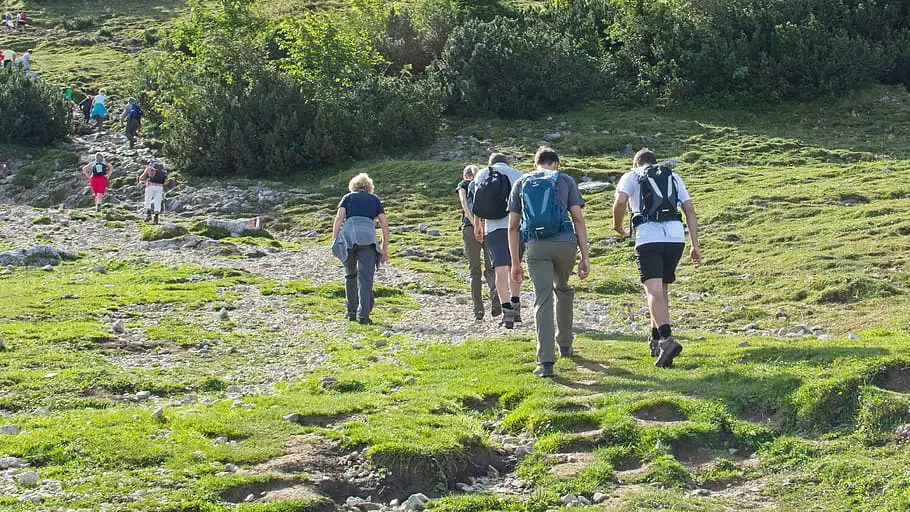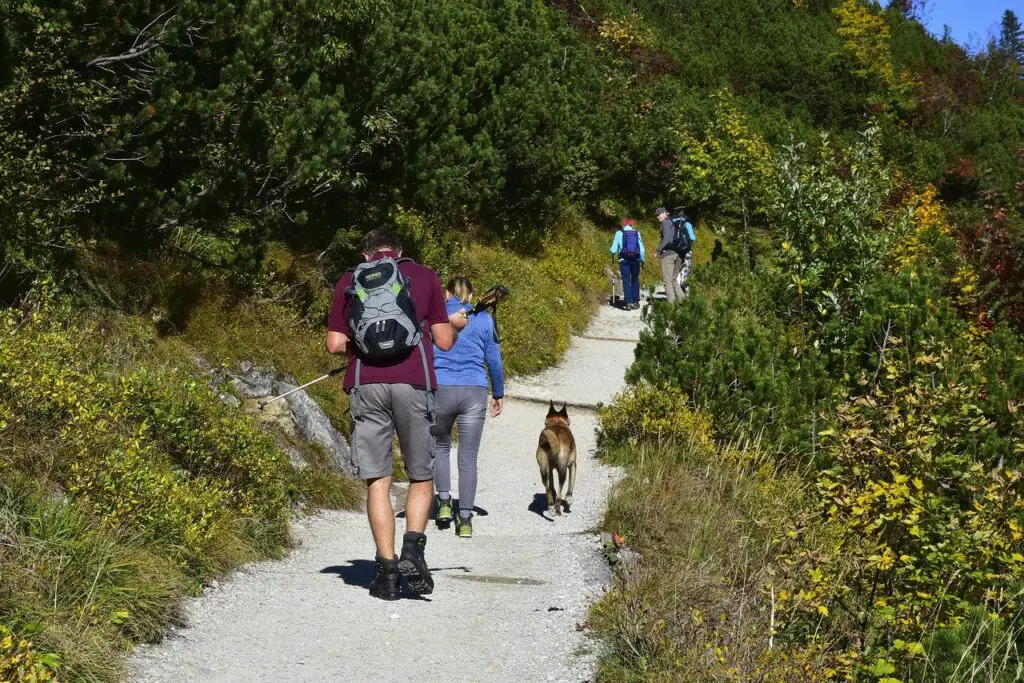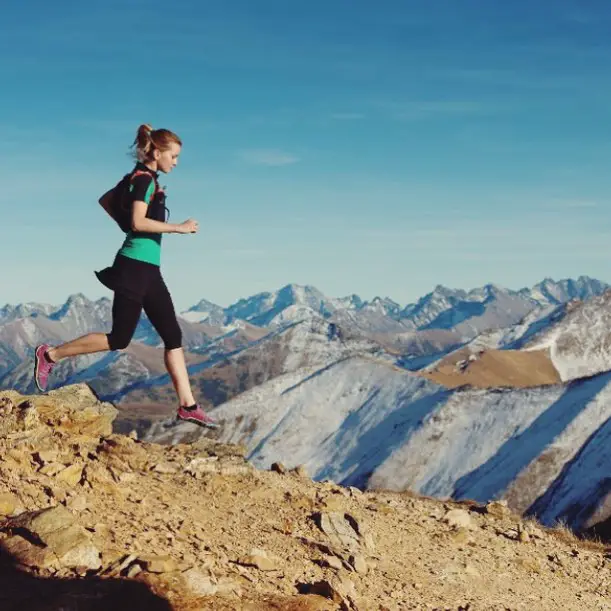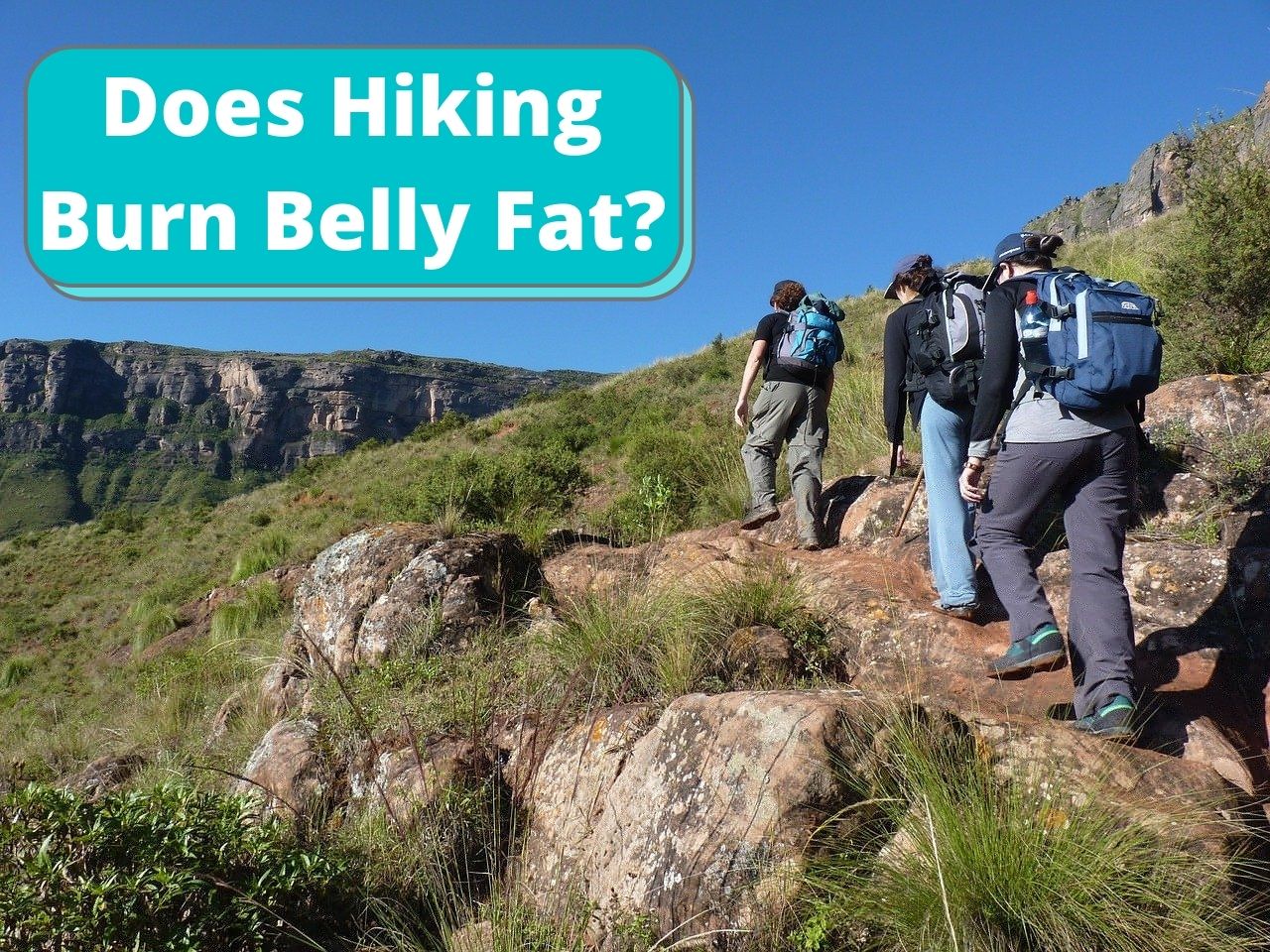If you’re looking to get more active or trim while hiking, you may be asking “does hiking burn belly fat?”.
The short answer is yes, hiking does burn belly fat! In fact, hiking is considered one of the best exercises you can do to burn fat.
There’s a bit more to it though, and we’ll explore more about how hiking burns belly fat in this article.
How Does Hiking Burn Belly Fat?
To be clear, the body does not burn fat from one specific area. Whether you’re hiking or doing any other type of exercise, the activity works to burn calories and decrease fat all over your body.
Hiking is a great way to lose weight and get in shape because it’s a high-duration, low-intensity cardio activity. Cardio is one of the best ways to burn fat.
Hiking’s also better than running or jogging because of the inclines, declines, and uneven terrain that is found on hiking trails.
It’s this unique terrain that engages some of your body’s largest muscles, like quads, glutes, and back, which help to burn more fat.

How Many Calories Does Hiking Burn?
There are a few different factors that will affect how many calories you’ll burn per hour while hiking.
These factors include your fitness level, the weight of your backpack, the intensity of your hike, and the terrain of the trail you’re hiking.
Experienced hikers will burn less calories than new hikers due to their body adapting to the demands of hiking – when new to hiking, you are engaging muscles your body simply isn’t used to using, which burns more calories.
A big factor in how many calories burned while hiking depends on the hiker’s body weight. The more you weigh, the more calories will be used on a hike.
For example, a 160 pound person will burn between 430-440 calories per hour while hiking, while a 200 pound person will burn closer to 550-600 calories per hour while hiking.
Take a look at this sample chart to get an idea of how many calories you can expect to burn per hour:
TABLE FROM NOMADHIKER
Add in steep terrains, heavy backpacks, or faster speeds of hiking, and you’ll be burning even more on your hikes.
How Burning Calories While Hiking And Hiking For Weight Loss Works
When considering weight loss, it’s a simple equation: you must use more calories than you eat in order to lose weight.
Calories are a measurement of energy we use to measure how much energy foods give us.
Calories can be made up of three different macronutrients: protein, carbohydrates (carbs), or fat.
Calories stored in your body as protein are converted to muscle, which your body will not burn as a first option.
On the other hand, calories stored in your body as fat or carbohydrates are burned during exercise or during a calorie deficit.
Incorporating exercise such as hiking along with healthy eating results in a calorie deficit, burning fat and resulting in weight loss.

How Does Hiking Burn Belly Fat Vs Other Activities?
Hiking is a great form of cardio that also engages plenty of other muscles and promotes stability and balance due to the inclines, declines, and uneven terrain that hiking trails have to offer.
This type of activity can’t be replicated by things like a treadmill or stationary bike, or even running or cycling outdoors.
Hiking burns about 33% more calories than walking.
The fact that hiking is purely an outdoor sport is a huge advantage – exercising outdoors increases oxygen flow, which helps increase energy, improves focus, lowers blood pressure, and can even help the body digest food more efficiently.
Research even supports the fact that spending time outdoors – especially exercising – can even boost creativity levels for days after hiking.
Lastly, hiking is also gentler on your joints compared to running or weight training.
Tips For Hiking To Burn Belly Fat
Start With Small And Easy Hikes
You wouldn’t start weightlifting by putting several hundred pounds on the bar, and by the same token, you shouldn’t start out hiking a 10-mile mountain trail either.
Take a few one or two-mile hikes on gentle terrain to get in to the swing of things.
Add Some Variety To Your Hikes
Once you’re comfortable with simple hikes, try some trails that have inclines and declines on them, and experiment hiking at different speeds.
This will help put extra work on your muscles, burning away more calories and more fat.
Try Out Hiking Poles
Hiking poles have been found to increase the number of calories burnt while the hiker still felt like they were doing the same amount of work, according to several published studies.
Hiking poles will also help improve your hiking experience and promote extra stability.
Add Weight To Your Hike
Adding a backpack with some additional weight in it (like water bottles, for instance) will increase your exertion and the amount of calories you’ll burn while hiking.
Stay Hydrated
You’re going to be sweating on your hike, and one of the most important aspects of any exercise regimen is staying hydrated.
Bring about a half liter (or 16 ounces) of water for every hour you’ll be hiking. That’s up to an entire gallon in a four-hour hike!
Eat Before You Go – And Bring Healthy Snacks
It’s not wise to hike while fasting. Doing so puts you at risk of injuring yourself, passing out, or feeling ill on the trail.
Aim to eat a balanced meal several hours before you head out, and bring snacks with you for longer hikes.
Protein-rich snacks like jerky, cheese, and nuts are great, and carb-rich foods like granola also give you sustained energy while out on the trail.
Just be sure to not pack unhealthy or sugary snacks that will undo all the calories you’re burning off while hiking!
Be Prepared With The Right Gear
Having the right footwear makes all the difference in a safe and enjoyable hike. You’re not likely to last very long on the trail if you have foot pain or blisters.
Check out our guides to the best men’s hiking boots under $100 and the best women’s hiking boots under $100 to get started, and read through our guide on how hiking boots should fit to make sure your pair fits you great.
Additionally, hiking socks are inexpensive and will protect your feet on the trail, so be sure to pick up a pair while you’re at it.

Does Hiking Burn Belly Fat? Frequently Asked Questions
What Muscles Does Hiking Work?
Hiking engages various major lower-body muscle groups, including:
-Quads (Quadriceps)
-Calves
-Glutes
-Hamstrings
-Inner and Outer Thighs
-Hip Flexors
-Lower Back
The use of hiking poles also helps your arms get in on the action too, burning additional calories.
Is Hiking or Running Better For Weight Loss?
Running burns calories faster, but is much harder on your joints and can’t be done for as long of periods as hiking.
Additionally, hiking also incorporates the views of outdoors and sightseeing into your activity, making it generally much more enjoyable for people of all ages and skill levels.
Hiking is also generally recommended over running for those with joint issues or arthritis.
Does Hiking Or Walking Burn More Calories?
Hiking burns about 33% more calories per hour than walking does, making it better for weight loss and burning fat.
How Many Calories Does Hiking Burn Per Hour?
A good rule of thumb to calculate calories burnt per hour hiking is to take your weight and multiply it by 2.75.
By this example, a 150 lb person could expect to burn 2.75 times their weight in calories hiking each hour (150 x 2.75), or 412 calories.
Take a look at this chart to get a rough idea of what you can expect to burn per hour of hiking:
TABLE FROM NOMADHIKER.COM
What Are The Best Exercises To Get In Shape For Hiking?
Because hiking targets the major muscles in your lower body, the best exercises for hiking are squats, lunges, and calf raises.
To learn more about how to get in better shape for hiking, check out our guide to which exercise gives explosive power for hiking uphill.
Will Hiking Make My Legs Bigger?
Hiking will not make your legs bigger. Same goes for your glutes or calves. Typically, avid hikers have lean and toned physiques due to the caloric expenditure of hiking.
Muscle growth and increased muscle mass occurs when there is enough calories, or a calorie surplus, along with focused training such as bodybuilding or powerlifting.
Hiking will, however, help your lower body gain strength and get toned.
Does Hiking Burn Belly Fat? Wrapping Things Up
As we’ve covered, hiking can indeed burn belly fat and aid in weight loss when combined with intentional eating and when resulting in a calorie deficit.
Hiking has great mental benefits as well, and can be a great way to bond with friends and family while getting outdoors and experiencing nature.
What personal benefits have you seen from hiking? Let us know in the comments below.


